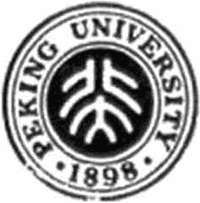It looks like some standardization might slowly be coming to the teaching in Taiwan of Taiwanese and Hakka. Beginning with the 2007-2008 school year, material from publishing companies for teaching “local languages” (i.e., Taiwanese, Hakka, and, sometimes, the languages of Taiwan’s tribes) must first pass inspection by the Ministry of Education. The ministry should have its own teaching materials ready by the 2009-2010 school year. Schools will be free to choose among textbooks from publishers or from the ministry.
Specifically, publishers should by all means avoid dredging up obscure Chinese characters to use for Taiwanese morphemes, Pan Wen-zhong, a high-ranking official with the ministry, said on Monday. There are easier ways to read and write the language than with such characters, especially when teaching elementary school students, he noted.
As much as I agree with this, it is still probably a case of too little, too late.
國小鄉土語言教材怪字連篇、拼音混亂的情況,很多家長教起孩子既頭痛、又氣 憤。教育部國教司長潘文忠表示,96學年度起,民間編印的鄉土語言教材,一律要 先經過審查,才能選用,一些罕見的怪字可望從教材中消失。
教育部國語推行委員會也已經著手編印閩南語、客家語教材,預計98學年度開始, 學校教閩南語或客語,就可以選用部編本教材。
在審定本和部編本教材還沒有出來之前,潘文忠呼籲老師使用既有教材教鄉土語言 時,盡量不要教、不要用罕見漢字。尤其是小學生,他強調應該使用「老師教過、 學生學過」的字辭,像蟑螂就用蟑螂,不必刻意教閩南語發音的新辭,更不要用罕 見字。
國小民編本鄉土語言教材怪字連篇的情況,多年來在立法院和地方議會經常被批 評,連官員都被考倒,家長更是苦不堪言。光是蟑螂、蒼蠅這些日常生活中常用 辭,不同教材,蟑螂就有「虼」、「假裁縫」等不同寫法,蒼蠅也有「真司公」、 「呼神」、「胡蠅」、「互蠅」等用法。
source: xiāngtǔyǔ jiàocái yào xiàn shěn — bùnéng yòng qíguài Hànzì (鄉語教材要先審 不能用怪字), August 27, 2006

 Peking University, China’s most prestigious school, has announced that it is planning a change. First, the school’s logo will be redesigned. The original was made by Lu Xun, who was apparently not just a
Peking University, China’s most prestigious school, has announced that it is planning a change. First, the school’s logo will be redesigned. The original was made by Lu Xun, who was apparently not just a